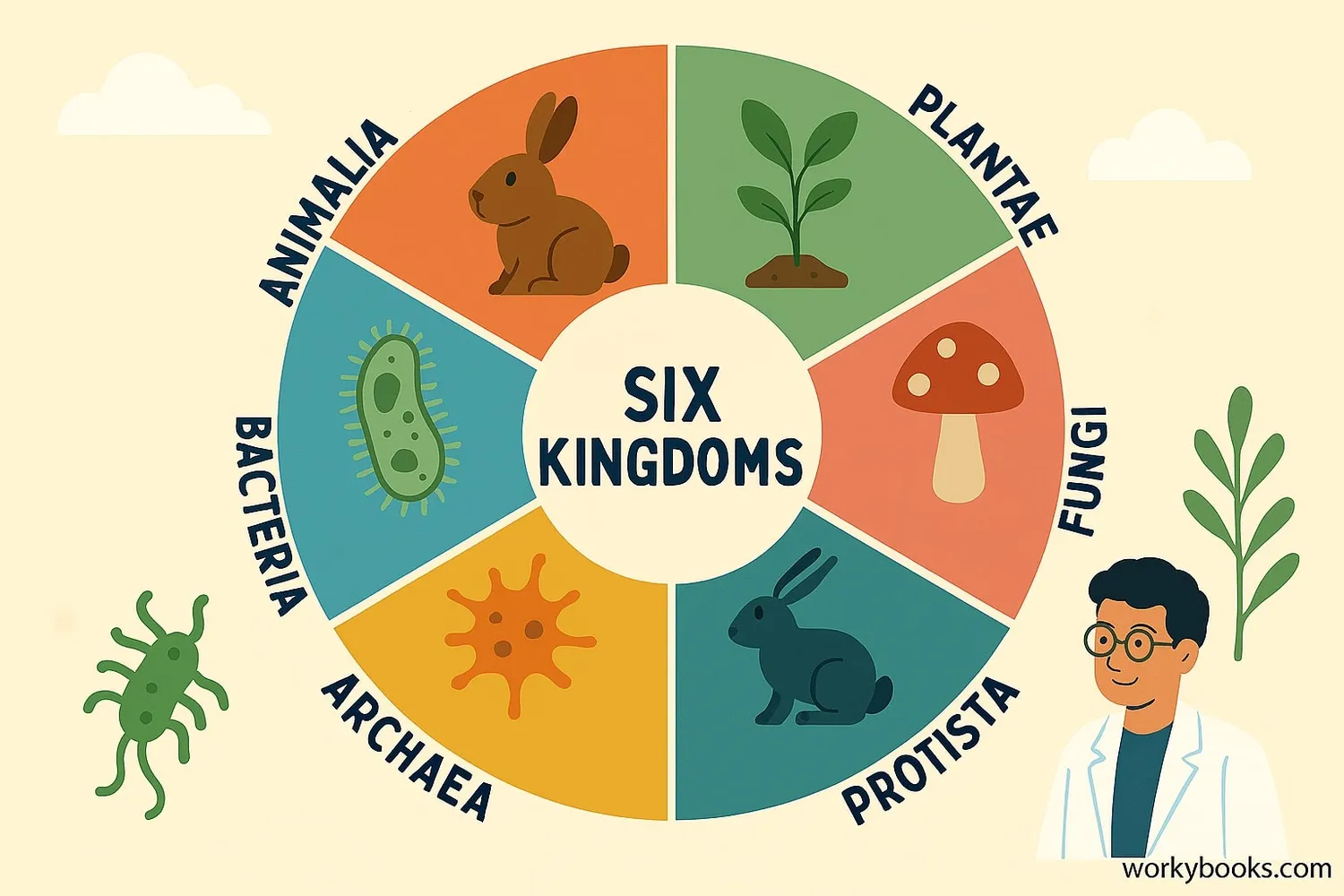Biological Classification - Definition, Examples, Quiz, FAQ, Trivia
Discover how scientists organize living things into groups!
What is Biological Classification?

Biological classification is how scientists organize living things into groups based on their similarities. It's like creating a giant family tree for all living organisms on Earth!
Imagine trying to find one specific book in a huge library with no organization. Classification helps us understand relationships between different species and makes studying life much easier.
Classification Fact!
Scientists estimate there are between 8-10 million different species on Earth, but only about 1.7 million have been classified!
Why Classification Matters

Classification is essential for many reasons:
Organization
Helps organize the huge diversity of life on Earth
Understanding
Shows how living things are related to each other
Identification
Makes it easier to identify new species
Conservation
Helps protect endangered species
Research
Provides a common language for scientists worldwide
Without classification, studying biology would be like trying to solve a giant puzzle with all the pieces mixed together!
Levels of Classification

Scientists use a system with eight main levels to classify living things. This system goes from very broad groups to very specific ones:
Domain
The broadest category (e.g., Bacteria, Archaea, Eukarya)
Kingdom
Major groups (e.g., Animals, Plants, Fungi)
Phylum
Groups within kingdoms (e.g., Chordates, Arthropods)
Class
Groups within phyla (e.g., Mammals, Birds, Reptiles)
Order
Groups within classes (e.g., Carnivores, Primates)
Family
Groups within orders (e.g., Cats, Dogs)
Genus
Groups of similar species (e.g., Panthera for big cats)
Species
Most specific group (e.g., Panthera leo - lion)
Example: Humans are classified as: Eukarya (Domain) → Animalia (Kingdom) → Chordata (Phylum) → Mammalia (Class) → Primates (Order) → Hominidae (Family) → Homo (Genus) → sapiens (Species)
Kingdoms of Life

Scientists group all living things into six main kingdoms:
Animalia
Multicellular animals that eat other organisms:
- Vertebrates (fish, birds, mammals)
- Invertebrates (insects, worms, jellyfish)
- Over 1 million known species
Plantae
Multicellular plants that make their own food:
- Flowering plants
- Conifers
- Ferns and mosses
- Over 300,000 known species
Fungi
Organisms that absorb nutrients:
- Mushrooms
- Molds
- Yeasts
- Over 120,000 known species
Protista
Mostly single-celled organisms:
- Amoebas
- Algae
- Paramecium
- Over 100,000 known species
Archaea
Single-celled organisms in extreme environments:
- Hot springs
- Deep sea vents
- Salty lakes
- Thousands of species
Bacteria
Microscopic single-celled organisms:
- Found everywhere
- Some helpful, some harmful
- Millions of species
Classification Quiz
Test your knowledge about biological classification with this quiz!
Frequently Asked Questions
Here are answers to common questions about biological classification:
Fun Classification Trivia
Discover amazing facts about biological classification!
Ancient Classification
Aristotle was one of the first to classify organisms over 2,300 years ago! He grouped animals by whether they had blood, how they moved, and whether they lived on land, in water, or in the air.
Insect Diversity
Insects make up about 75% of all animal species! There are more species of beetles than all plant species combined.
Scientific Names
Every species has a two-part scientific name in Latin. The first part is the genus, and the second is the species. For example, humans are Homo sapiens.
New Discoveries
Scientists discover about 15,000 new species each year! Most are insects, but new mammals, fish, and plants are also found regularly.


